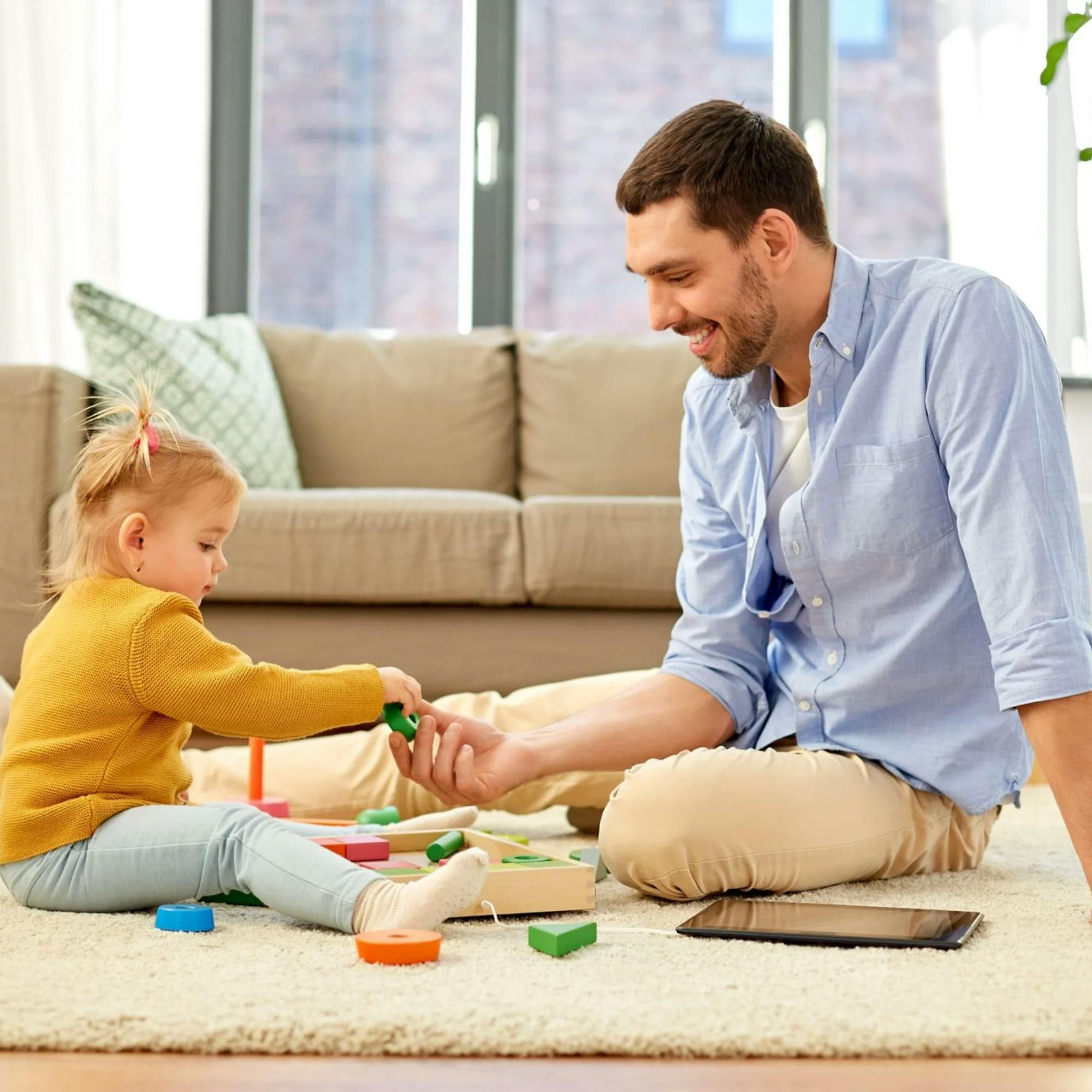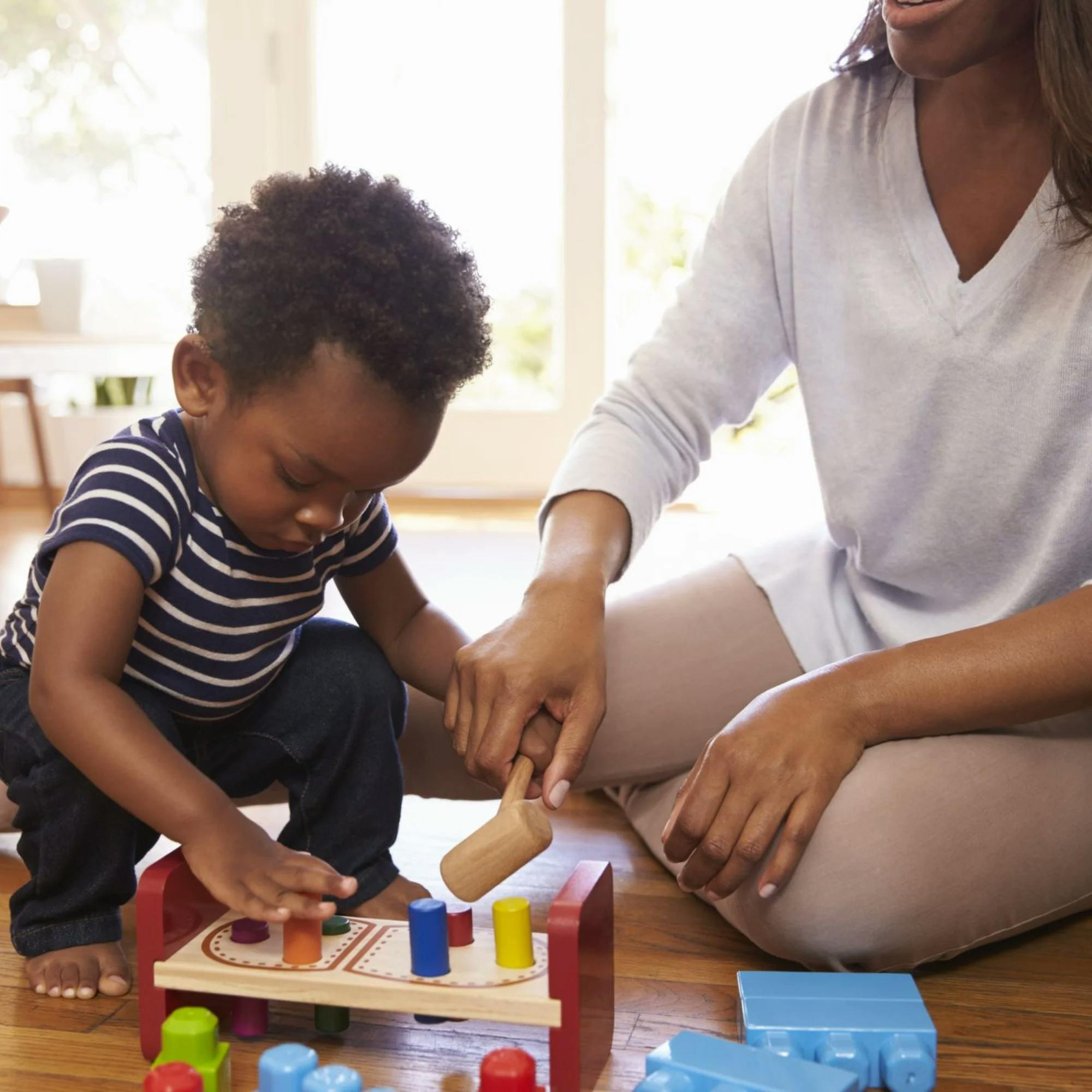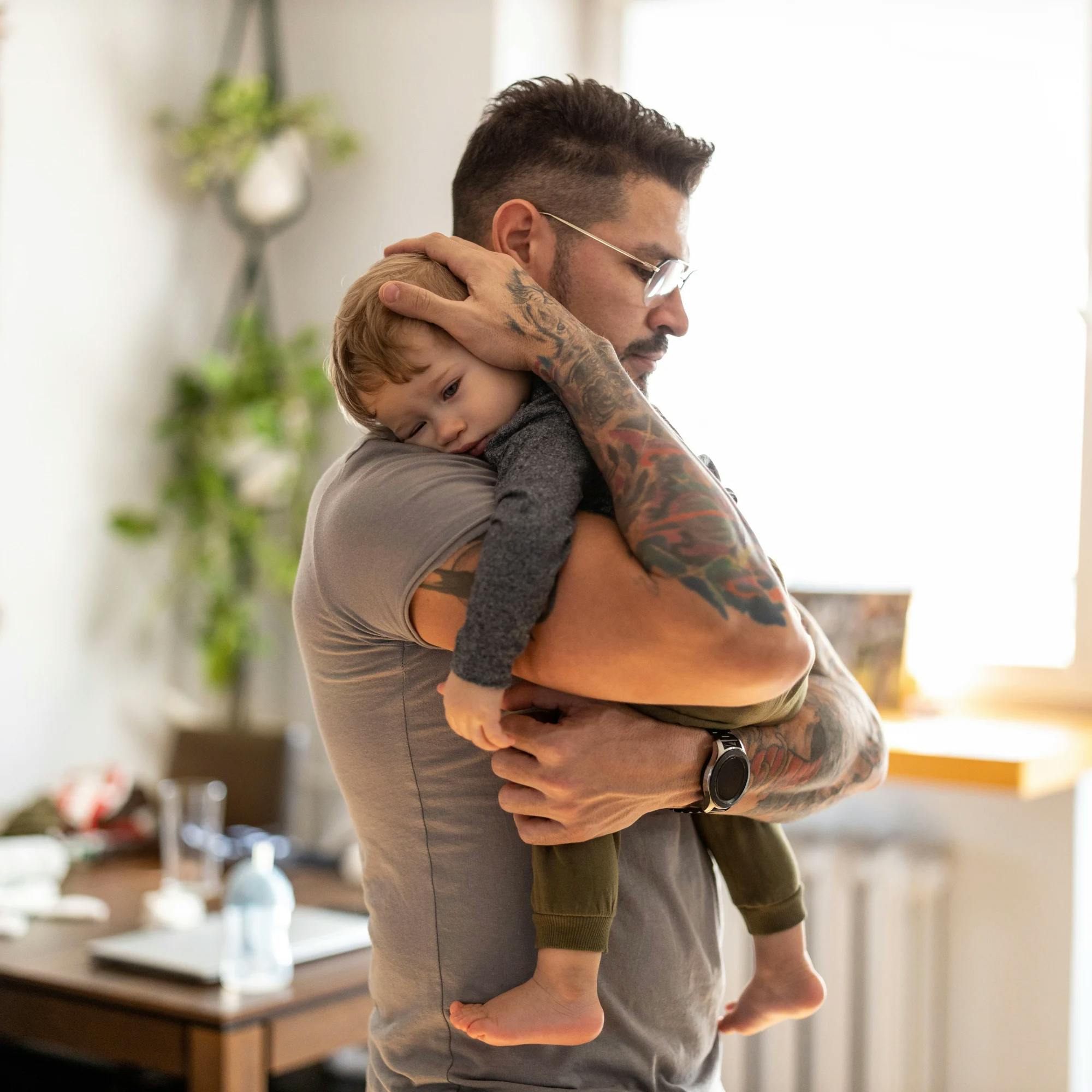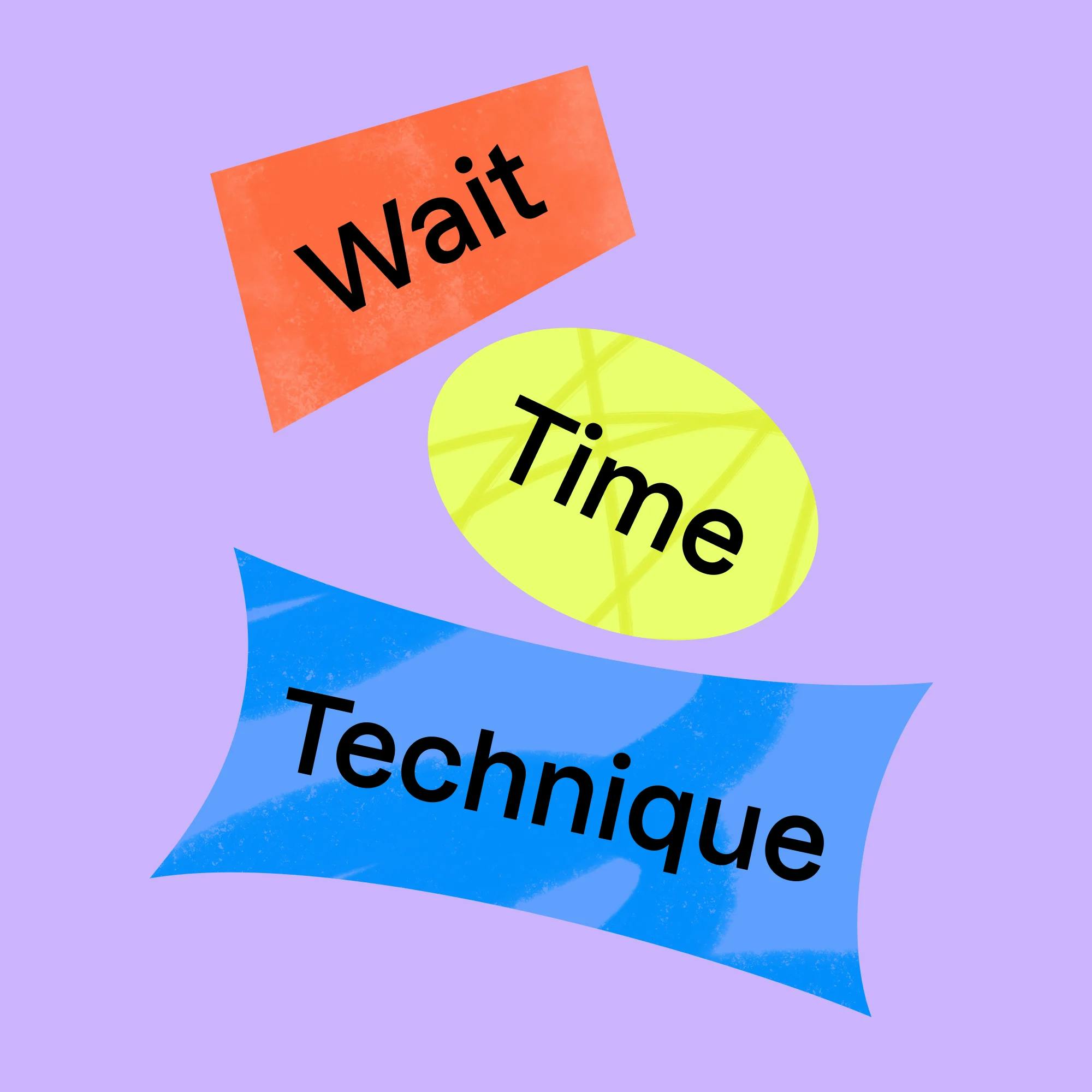4 Strategies to Help Your Toddler's Language Growth
This video lesson is part of our Small Talk course, created by licensed speech-language pathologists and hosted by Expressable's Chief Clinical Officer Leanne Sherred, M.S., CCC-SLP. Small Talk teaches you simple strategies to help your newborn to 18-month-old learn to communicate. Featuring expert, research-backed tips and techniques, plus demonstrations from a real mom and her toddler.
Video transcript:
In this video, we’re going to cover foundational support strategies that set the groundwork for all the language growth to come.
But first, I want to spend a few minutes talking about the role you play as a parent or caregiver on your child’s language development. If there’s one thing, just one thing, I want you to remember, it’s this: anytime spent with your child is time well spent.
Said another way, one of the most powerful tools your child has to improve their speech and language abilities is also the most accessible: you.
It’s difficult to overstate the importance of parental involvement on a child’s language development and wellbeing. Many research studies have shown that when parents and caregivers take an active role in promoting communication skills at home, and building a language-rich environment that children crave, they make considerably more progress towards their communication goals.
For example, in one study researchers from Vanderbilt University evaluated the effectiveness of “parent-implemented intervention” among groups of parents trained to promote their child’s communication. Here is what they found:
Parents were successfully able to understand and learn the strategies taught by the speech therapists, and apply them when interacting with their child
Parents also had a positive effect on their child’s communication development. As a result children showed improvement in their verbal and nonverbal communication skills, including understanding vocabulary, grammar, and the frequency with which they communicated
Most surprisingly, when given the right tools, parents were just as effective at helping their child as speech therapists were.
And finally, children with a variety of language difficulties, including Language Impairment, Autism Spectrum Disorder, and Developmental Delay, also made substantial progress when their parents were involved.
Does this mean that speech therapy or professional intervention isn’t needed? Absolutely not. Working with a professional can be essential to growing and remediating a speech or language disorder. But it does go to show how crucial your role is to your child’s communication success. At the end of the day, you know your child best - their personality, temperament, and even when a temper tantrum is looming. No one can replace the intuitive connection you have with your child. Plus, children learn foundational language skills by absorbing and interacting with those around them, as well as communicating during everyday activities - whether that’s playing, joking, speaking, or reading. And no one spends more time with your child than you. So let’s dive in and cover some basic, universal strategies that apply to nearly all these different techniques. Think of these as the basic building blocks that help set the foundation for all the language-building skills. To demonstrate my point, let’s take a totally random example. Say this was an…. exercise course. And we were going to cover push ups, squats, aerobics, lunges, and dumbbells - all important techniques to strengthen different parts of the body. Well, before we did that, wouldn’t it be helpful to cover basic concepts like stretching, hydration, and warm ups? You really shouldn’t be doing one without the other. So, let’s cover some of these foundational concepts. They include modeling, wait time, daily communication opportunities, positive reinforcement, and consistency.
Modeling
Modeling is one of the most essential strategies that help children work their way up the language ladder. Modeling language is pretty much just that - modeling how sounds and words should be uttered to help your child learn, imitate, and eventually use this language independently.
Modeling involves:
Speaking slowwwwly
Speaking very c-l-e-a-r-l-y
Using short sentences
And lots of repetition of the target sounds or words you want your child to eventually use.
To start language modeling, it’s important to consider what developmental stage your child is in. Maybe your baby is using gestures, like pointing, but hasn’t really started experimenting with their voice. Or maybe they’ve begun vocalizing sounds and babbling - mama or baba - but haven’t yet formed their first meaningful word.
We always want to model one level ahead of a baby’s current language level. So if they’re using gestures, we want to model basic sounds. If they’re using basic sounds, we want to model simple words. If they’re using simple words, we want to begin putting words together to model simple phrases.
Typically, as you continue to model target sounds and words with your child, you should begin to hear them imitate - or repeat - those sounds or words back to you. We discuss how to use imitation in a subsequent lesson, but for now just know this: no matter what you’re noticing in your child’s speech, it’s important to model the communication we’d like to help them build.
Wait time
When speaking with your child, it’s important to give them enough time to process what you just said, collect their thoughts, and provide a response.
As parents and caregivers, this can take some practice on our part. We expect answers immediately, and sometimes it can be tempting to jump in too quickly or offer “hints.” However, it’s important to pause after a question, provide a model or prompt, and wait expectantly for up to 10-15 seconds. This will give your kiddo enough time to respond.
Here’s a few ways this could play out:
If you’re giving your child a choice of two snacks, you could say, “do you want this, or this?” and give them enough time to make their selection.
If you’re reading a book together, you could say, “look at the d-d-d-d_” and give your child time to say the word, “dog!”
If you’re singing with your child, you could say, “Old McDonald had a__” and see if your child will fill in “farm!”
Positive reinforcement
Just like learning any new skill, we want to keep practice fun and motivating and do our best to avoid discouragement.
In addition to incorporating things your child already loves - like toys, games, and playtime - one of the easiest ways to do this is simply by providing lots of positive reinforcement. Make sure to clap, cheer, offer big exaggerated smiles, and praise your kiddo at every step of the way. “Yay!” “That’s so good!” “You did it!”
No task or communicative attempt is too small not to deserve your encouragement. Children will start associating this positive reinforcement with a job well done, and work extra hard to see that smile on your face.
Daily communication opportunities
Language-building activities don’t require long time commitments, or elaborate materials, or fancy techniques. It can simply entail making small but intentional changes to daily interactions with your child during routines you're already doing.
That’s the wonderful thing about communication practice - it can be done anywhere and anytime! Opportunities for daily communication are all around you - getting dressed, going for a walk, bedtime routines - and these little changes quickly add up to lots of progress.
One of my favorite phrases is: “a little bit, a lot of time.” Meaning, making the smallest adjustments to daily interactions with your child will go a long way towards improving their speech and language abilities.
Identifying opportunities for support
Learning to identify language-building moments means that practice opportunities can become ever-present.
Think about your day for a second. Are there moments when your child’s communication has caused them frustration, or you’re having a hard time understanding them or interpreting their needs?
Providing helpful cues is a common part of daily practice. For example, we might say a word with hopes that your child imitates it. Or if your child is practicing identifying the names of items, we may offer up the first sound to get them started, like “ha-ha-hat.”
So what happens if we provide these cueing opportunities but your child is still struggling? It can be tempting to just keep repeating them indefinitely with hopes that your child responds. However, this can run the risk of being exhausting to you, and also discouraging for your kiddo. Our goal is to create positive interactions with your child, not negative ones.
As you begin implementing language-building techniques in subsequent lessons, you may find that your child is not responding as hoped. That is okay! Practice, regardless of outcome, is still helpful.
Consistency
We’ve covered this point a few times, but it’s worth a final encore. Learning foundational communication skills is like learning anything else - it takes practice, persistence, and repetition.
We want to ensure your child is reaching age-expected milestones as they grow into a clear and effective communicator. If language practice is not reinforced regularly at home, progress will happen slower and your child won’t receive the repetition needed for growth and change to occur.
Can you find 30 minutes in your day? 20 minutes? 5 minutes? Time isn’t as important as consistency.











